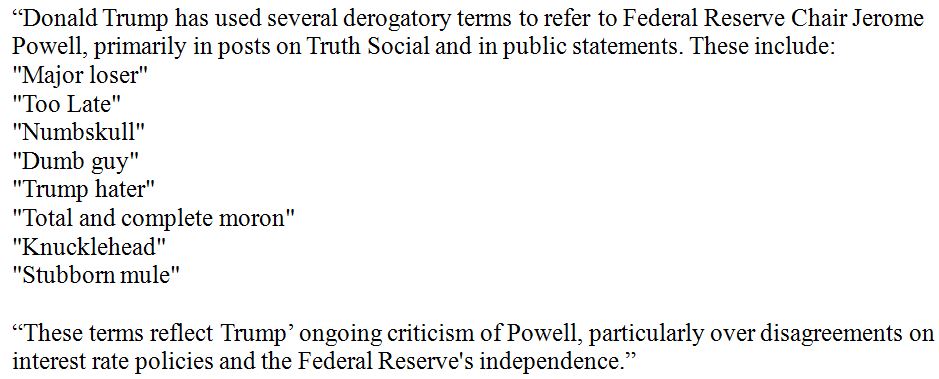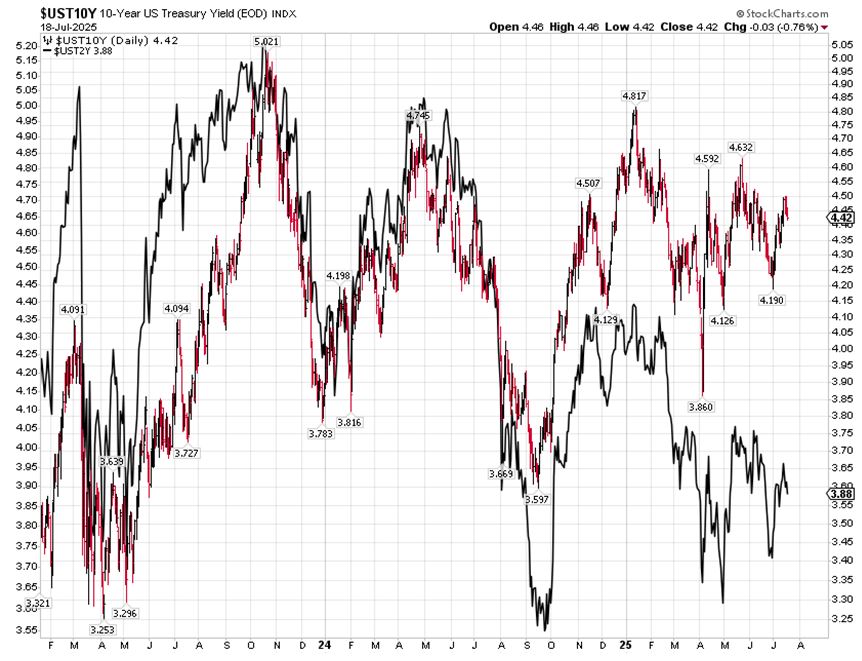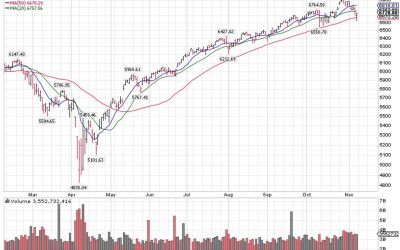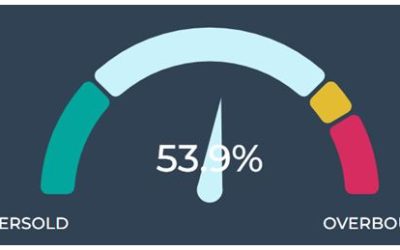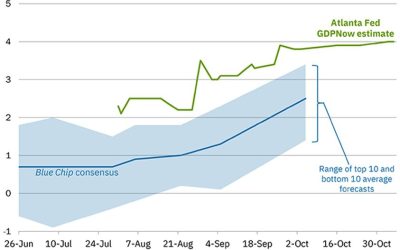by Ivan Martchev
July 22, 2025
I grow suspicious when the stock market makes a new all-time high one day and then immediately sells off later that same day or on the next day. Once or twice is bad enough, but that has happened four times so far in July. I know that a sell-off should be expected after we rose so fast in the second half of June, but it is still annoying to see so often. My theory remains that the lack of any major trade deals may cause a correction. That has not worked out yet, and the Trump administration may give their trade partners more extensions (beyond August 1st) if they see potential deals progressing, but on the other hand they may determine that those are stalling strategies played by the EU, China and other trade abusers, which would lead to the old carrot-and-stick approach. I think what we have seen since the 90-day pause began was the carrot first – and I think you know what the stick looks like: Super-high tariff rates finally taking effect.
The discussion about firing the Fed chairman also resumed last week, when we saw huge swings in bonds and stocks and even the dollar. Because of that, I asked my AI bot buddy, Grok (Elon Musk’s creation): “What terms did Trump call Powell?” Here is the answer verbatim: The bot sure didn’t mince any words:
The bot even provided links for each of those colorful terms, which I will spare you. Those were not all the terms the President added last week, but they sure are recent. I agree somewhat with him being “too late” and a “Trump hater,” but I don’t agree with the rest. I think that if President Trump fired Powell, he would shoot himself in the foot, as such a move would go all the way to the Supreme Court and the Court will side with Powell. If Trump fires Powell, the correction I fear may (because of tariff war escalations) come about quicker and may turn out to be bigger, depending on how quickly the issue is resolved.
Basically, I would argue that the President should not be able to fire the Federal Reserve Chairman just because he wants lower interest rates. And I am saying this even though I too have very serious issues with Powell’s chairmanship of the Fed and their forays into diversity, equity, and inclusion, and climate change. I strongly suspect that those initiatives may have been announced so that Chairman Powell may get renominated by President Joe Biden and in no way should they have been the business of the Fed.
If Powell is fired and not reinstated (which I consider extremely unlikely – with no more than a 5% chance), and a new Fed chair cuts short-term interest rates, that won’t really lower long-term interest rates. The main issue is that the U.S. government is out of control in deficit spending and the resulting debt spiral, which President Trump and his gifted Treasury Secretary Scott Bessent are trying to address.
I did not see Joe Biden or his team trying to address the rising budget and trade deficit in any way, other than to let his Treasury Secretary Janet Yellen use a bizarre explanation for how the debt trajectory was “sustainable,” because the U.S. had done it before, in WWII. But we lowered the deficit when that war ended, and the last time I checked, there is no World War, so why are we spending at world war levels?
Graphs are for illustrative and discussion purposes only. Please read important disclosures at the end of this commentary.
Lowering interest rates under political pressure may actually cause a spike in long-term rates, similar to what happened to Liz Truss during her 49 days as British Prime Minister, the shortest-serving PM in history. It is true that the Treasury’s 2-year note yield is below the Fed funds rate, which means the Fed is too tight, but the 10-year yield has not gone down in parallel with Fed rate cuts (and 2-year note decline).
The 10- year yield can go up if the economy heats up, which is what President Trump wants, so cutting rates at the short end won’t help lower deficits very much if they are financed with longer-dated bonds.
To put it simply, the 10-year Treasury rate is worried more about economic growth and inflation and increasing deficits, while the 2-year note is more closely tied to Fed policy. Scott Bessent, who is a very talented Treasury Secretary, needs to explain to Mr. Trump that lowering the Fed funds rate does not mean that the 10-year Treasury yield will necessarily go down. It might go up, if Chairman Powell is fired before his term is up next May. If the President tries to fire Powell, this could turn into a full-scale judicial soap opera, going all the way to the Supreme Court, which would only hurt Mr. Trump’s economic plans.
I am rooting for the President to win in his trade war negotiations, as I think it should have been waged a long time ago, even before his first administration, but no other President has had the vision to force our trading partners to lower their trade barriers. Because President Trump has too many irons in the fire at present, one more hot iron – of trying to remove Chairman Powell – would only hurt him, in this case.
The post 7-22-25: Too Many Irons Remain in the Trade War Fire appeared first on Navellier.




